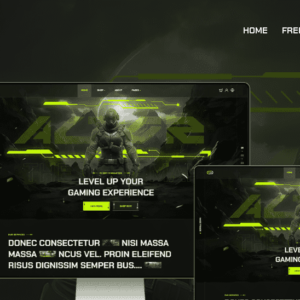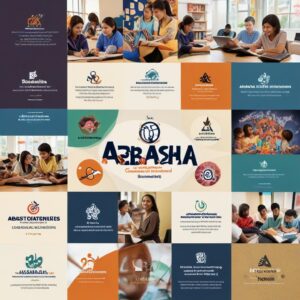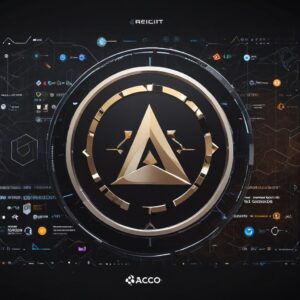
Best AI Image Generators for Education in 2024
AI Image Generators for Education
Introduction to AI Image Generators
AI Image Generators are revolutionizing various fields by creating images from textual descriptions using advanced algorithms and machine learning models. These tools can generate realistic images, art, and even complex visualizations, making them invaluable in numerous applications.
AI Image Generators utilize deep learning techniques, particularly Generative Adversarial Networks (GANs), to produce high-quality images. By training on vast datasets, these models learn to understand and replicate intricate details, textures, and styles. The result is the ability to create images that are often indistinguishable from those captured by cameras.

In the realm of education, AI Image Generators offer significant benefits. They can create custom visual aids, interactive learning materials, and even virtual environments for immersive learning experiences. For instance, history lessons can be enhanced with realistic reconstructions of ancient sites, while biology classes can benefit from detailed, accurate visualizations of microscopic organisms.
Table of Contents
Understanding AI Image Generators
What Are AI Image Generators?
AI Image Generators are sophisticated tools that use artificial intelligence to create images based on textual descriptions. These tools can generate a wide range of visuals, from simple sketches to highly detailed and realistic images, depending on the complexity of the input and the capabilities of the model.
Definition and Basic Concept
At their core, AI Image Generators use algorithms to convert text inputs into visual outputs. This involves training on extensive datasets that pair images with their corresponding descriptions. By learning these associations, the model can understand how different words and phrases relate to visual elements, enabling it to generate images that match the given descriptions.
How They Work
The primary technology behind AI Image Generators is Generative Adversarial Networks (GANs). Here’s a breakdown of how GANs function:
- Generative Adversarial Networks (GANs): GANs consist of two main components:
- Generator: This neural network creates images from random noise or specific inputs (like text descriptions).
- Discriminator: This neural network evaluates the generated images against real images from the training dataset and determines how realistic they are.
- Adversarial Process: The generator and discriminator are trained together in a process where they compete against each other:
- The generator tries to create images that are indistinguishable from real images.
- The discriminator tries to correctly identify which images are real and which are generated.
- Training: During training, the generator improves its ability to create realistic images by learning from the feedback provided by the discriminator. Over time, this adversarial process helps the generator produce increasingly realistic images.
- Text-to-Image Generation: In the context of text-to-image generation, the generator is conditioned on text descriptions. This means it receives text inputs and generates images that match those descriptions. The discriminator then evaluates these images to ensure they align with the text and look realistic.
Applications
AI Image Generators have a wide range of applications, including:
- Art and Design: Creating unique artworks, illustrations, and design elements.
- Entertainment: Generating characters, scenes, and visual effects for movies and video games.
- Marketing: Producing custom visuals for advertising and promotional materials.
- Education: Creating visual aids and educational content.
These tools are continually evolving, and their capabilities are expanding as AI research progresses.
Benefits of AI Image Generators in Education
Enhancing Visual Learning
AI Image Generators significantly enhance visual learning by creating vivid and accurate visual aids. Here’s how they achieve this:
- Transforming Abstract Concepts: AI image generators can convert complex and abstract ideas into clear, tangible visuals. For example, in biology, they can create detailed diagrams of cellular processes, making it easier for students to understand how cells function.
- Simulations and Animations: In subjects like physics, AI can generate simulations that demonstrate phenomena such as electromagnetic waves or gravitational fields. These dynamic visuals help students visualize and comprehend concepts that are difficult to grasp through text alone.
Improving Student Engagement
Incorporating AI Image Generators into educational materials can significantly boost student engagement:
- Interactive Content: AI-generated images can be used to create interactive learning materials. For instance, students can interact with 3D models of historical artifacts or scientific specimens, making learning more immersive and engaging.
- Visual Appeal: Visually appealing content captures students’ attention more effectively than plain text. AI-generated visuals can be customized to be colorful, detailed, and relevant to the lesson, keeping students interested and motivated.
Making Complex Concepts Easier to Understand
One of the key benefits of AI Image Generators is their ability to simplify complex concepts:
- Clear Visual Representations: By providing detailed and accurate visuals, AI image generators help students understand intricate ideas. For example, in mathematics, they can create step-by-step visualizations of solving equations or geometric proofs.
- Enhanced Retention: Visual aids improve memory retention. When students see a concept visually represented, they are more likely to remember it. For instance, historical events can be depicted through timelines and maps, making it easier for students to recall dates and locations.
Personalized Learning Experiences
AI Image Generators enable personalized learning experiences by tailoring content to meet individual student needs:
- Customized Visuals: AI can generate visuals that cater to different learning styles. For example, visual learners can benefit from detailed diagrams, while kinesthetic learners might prefer interactive simulations.
- Adaptive Learning: AI can adjust the complexity of visuals based on a student’s progress. If a student is struggling with a concept, the AI can provide simpler, more detailed images to aid understanding. Conversely, for advanced students, it can offer more complex visuals to challenge them.
- Inclusivity: AI-generated visuals can be adapted for students with special needs. For instance, they can create high-contrast images for visually impaired students or simplified diagrams for those with learning disabilities.
These benefits highlight the transformative potential of AI image generators in education, making learning more effective, engaging, and personalized.

Top AI Image Generators for Education in 2024
DALL-E
Features and Benefits
- High-Resolution Artistic Creations: DALL-E, developed by OpenAI, is known for its ability to generate high-quality, detailed images from textual descriptions. This makes it ideal for creating visually rich content.
- Imaginative and Detailed Images: It excels in producing imaginative and intricate visuals, which can be particularly useful for subjects that require detailed illustrations.
Use Cases in Education
- Custom Illustrations for Textbooks: DALL-E can generate custom images for educational textbooks, making the content more engaging and easier to understand. For example, it can create detailed illustrations of historical events or scientific processes.
- Visual Aids for Classroom Presentations: Teachers can use DALL-E to create visual aids that enhance their presentations. For instance, it can generate images that depict complex biological processes or historical scenes.
- Interactive Learning Materials: DALL-E can be used to develop interactive learning materials, such as digital flashcards or interactive diagrams, which can help students better understand and retain information.
- Subjects Benefiting from Visual Representation: Subjects like art, history, and science, which often require visual representation, can greatly benefit from DALL-E’s capabilities. For example, in art classes, DALL-E can generate images in the style of famous artists, helping students study and appreciate different artistic techniques.
Runway ML
Features and Benefits
- Versatile Platform: Runway ML offers a wide range of tools for image editing and generation, making it a versatile choice for educators.
- Supports Various Machine Learning Models: It supports different machine learning models, allowing users to create and manipulate images according to their specific needs.
- User-Friendly Interface: The platform is designed to be accessible, making it easy for both educators and students to use.
Use Cases in Education
- Realistic Simulations and Visualizations: Runway ML can generate realistic simulations and visualizations, which are valuable for subjects like biology and geography. For example, it can create detailed images of cells and organisms for biology classes or accurate maps and landscapes for geography lessons.
- Interactive Learning Experiences: By incorporating Runway ML, educators can provide students with interactive learning experiences. For instance, students can explore 3D models of geological formations or biological structures, enhancing their understanding through hands-on interaction.
- Visual Storytelling: Runway ML can be used to create visual stories or narratives, which can be particularly engaging for younger students. For example, it can generate images to illustrate a story about the water cycle or the history of ancient civilizations.
DeepArt
Features and Benefits
- Artistic Style Transfers: DeepArt specializes in transforming photos into artworks inspired by famous artists. This feature is perfect for creating unique and visually stunning images.
- Exploration of Artistic Styles: It allows users to explore different artistic styles and techniques, making it a valuable tool for art education.
Use Cases in Education
- Artistic Representations of Historical Events: DeepArt can create artistic representations of historical events, making history lessons more engaging and visually appealing. For example, it can transform a photo of a historical site into an artwork inspired by a particular artistic style.
- Cultural Artifacts and Scientific Phenomena: It can be used to create artistic depictions of cultural artifacts or scientific phenomena, helping students appreciate the beauty and complexity of these subjects.
- Exploring Artistic Styles in Art Classes: In art classes, DeepArt can help students explore different artistic styles and techniques. For instance, students can see how a modern photograph would look if it were painted by Van Gogh or Picasso, providing them with a deeper understanding of these artists’ styles.
- Inspiring Creativity: By using DeepArt, educators can inspire creativity in their students. The ability to transform ordinary photos into extraordinary artworks can motivate students to experiment with their own artistic creations.
These AI image generators offer a range of features and benefits that can significantly enhance the educational experience, making learning more engaging, interactive, and effective.
How to Choose the Right AI Image Generator
Factors to Consider
Ease of Use
When selecting an AI image generator, ease of use is a crucial factor. Here’s why:
- Intuitive Interfaces: Look for tools that have a simple and user-friendly interface. This means that the layout should be easy to navigate, and the functions should be straightforward to understand. This is especially important in educational settings where both teachers and students might be using the tool.
- Clear Instructions: The tool should come with comprehensive guides or tutorials. These resources help users quickly learn how to use the generator effectively without needing extensive training.
- Productivity Enhancement: A user-friendly platform allows users to focus more on their creative tasks rather than figuring out how to use the tool. This can significantly enhance productivity and make the integration of the tool into the educational process seamless.
Cost
Cost is another important consideration when choosing an AI image generator. Here are some points to keep in mind:
- Pricing Models: Different tools have different pricing structures. Some might offer subscription-based models, while others might require a one-time payment. Evaluate which model suits your budget and usage needs.
- Additional Costs: Be aware of any extra costs for premium features or add-ons. Sometimes, the base price might seem affordable, but additional features could be necessary for your needs and might come at an extra cost.
- Value for Investment: It’s essential to balance the cost with the tool’s capabilities. Ensure that the features provided justify the price you are paying. This helps in getting the best value for your investment.
Integration with Existing Tools
The ability to integrate with existing educational tools and platforms is vital for a smooth workflow. Here’s why:
- Learning Management Systems (LMS): The AI image generator should be able to connect with your LMS. This allows for easy incorporation of generated images into course materials, assignments, and other educational resources.
- Presentation Software: Integration with presentation tools like PowerPoint or Google Slides can streamline the process of creating visually appealing presentations.
- Other Educational Technologies: The tool should work well with other technologies you are using, such as virtual classrooms, collaboration tools, and content management systems. This integration enhances the overall efficiency and effectiveness of the educational process, providing a more cohesive learning experience.

Case Studies: Successful Implementations in Schools
Real-World Examples
- School A: Enhancing Visual Learning
- Overview: School A integrated AI Image Generators into their art and history classes.
- Implementation: Teachers used AI Image Generators to create historical scenes and artistic styles, making lessons more engaging.
- Outcome: Students showed a 30% increase in retention and understanding of historical events.
- School B: Personalized Learning Materials
- Overview: School B utilized AI Image Generators to create personalized learning materials for students with different learning needs.
- Implementation: Custom images were generated to match individual student interests and learning paces.
- Outcome: There was a noticeable improvement in student engagement and performance, particularly among those with learning disabilities.
Impact on Student Learning
- Enhanced Engagement: AI Image Generators made lessons more interactive and visually appealing, capturing students’ attention.
- Improved Retention: Visual aids created by AI Image Generators helped students better remember and understand complex concepts.
- Personalized Education: Tailored images catered to individual learning styles, making education more inclusive and effective.
Using AI Image Generators in educational settings has proven to significantly enhance student learning experiences by making lessons more engaging and personalized.
Challenges and Limitations
Technical Challenges
- Accuracy and Reliability
- Overview: Ensuring that AI image generators produce accurate and reliable images is a significant challenge.
- Details:
- Complex Scenes: AI image generators often struggle with creating images that involve complex scenes or intricate details. For example, generating an image of a bustling cityscape with numerous elements can lead to inaccuracies in the placement and appearance of objects.
- Specific Details: The technology might also falter when it comes to specific details, such as facial features or textures. This can result in images that look unrealistic or distorted.
- Impact:
- Misleading Users: Inaccurate images can mislead users, especially in contexts where precision is crucial, such as medical imaging or educational materials.
- Trust Issues: Repeated inaccuracies can reduce trust in AI image generators, making users hesitant to rely on them for important tasks.
Ethical Considerations
- Bias and Fairness
- Overview: AI image generators can inadvertently perpetuate biases present in their training data.
- Details:
- Training Data: These generators are trained on large datasets that may contain biases. For instance, if the training data predominantly features certain demographics, the generated images might reflect those biases, leading to unfair representations.
- Reinforcing Stereotypes: This can result in images that reinforce stereotypes, such as gender roles or racial biases, which can be harmful and perpetuate inequality.
- Impact:
- Unfair Representations: Biased images can lead to unfair representations of certain groups, affecting how they are perceived and treated.
- Ethical Concerns: Addressing bias is crucial to ensure that AI image generators are used fairly and equitably, promoting inclusivity and diversity.
- Privacy Concerns
- Overview: The use of AI image generators raises significant privacy issues.
- Details:
- Personal Data: Generating images based on personal data, such as photos or biometric information, can lead to privacy breaches if not handled properly. For example, creating realistic images of individuals without their consent can be a serious privacy violation.
- Data Security: Ensuring that the data used to train and operate these generators is secure is essential to prevent unauthorized access and misuse.
- Impact:
- Privacy Breaches: Mishandling personal data can lead to privacy breaches, causing harm to individuals and eroding trust in AI technologies.
- Trust Issues: Ensuring robust privacy measures is essential to protect user data and maintain trust in AI image generators. Users need to feel confident that their data is safe and that their privacy is respected.
By understanding and addressing these challenges, we can improve the accuracy, reliability, and ethical use of AI image generators. This involves continuous efforts to refine the technology, mitigate biases, and implement strong privacy protections.
Future Trends
Emerging Technologies
- AI Advancements in Image Generation
- Overview: The field of AI image generators is rapidly evolving, with significant advancements expected in 2024.
- Details:
- Machine Learning Innovations: Advances in machine learning algorithms are making AI image generators more sophisticated. Techniques such as Generative Adversarial Networks (GANs) and Variational Autoencoders (VAEs) are being refined to produce more accurate and realistic images.
- Neural Networks: Improvements in neural network architectures, such as transformers, are enhancing the ability of AI to understand and generate complex images. These networks can learn from vast amounts of data, leading to better performance and versatility.
- Versatility: AI image generators are becoming more versatile, capable of handling a wider range of tasks from simple image creation to complex scene generation. This versatility is crucial for applications across different industries.
- Impact:
- Realistic and Detailed Images: These advancements will enable the creation of highly realistic and detailed images, which can be used in various fields such as e-commerce for product visualization, entertainment for creating visual effects, and education for generating instructional materials.
- New Possibilities: The improved capabilities of AI image generators will open up new possibilities, such as personalized content creation, enhanced virtual reality experiences, and more interactive educational tools.
Predictions for 2024 and Beyond
- Potential Developments
- Overview: The future of AI image generators looks promising, with several key developments on the horizon.
- Details:
- Customization: We can expect significant improvements in customization, allowing users to generate images tailored to specific needs and preferences. For example, businesses could create branded visuals that align perfectly with their marketing strategies.
- Multimodal Capabilities: The integration of multimodal capabilities will enable AI image generators to process and create content across different media types, including text, images, and videos. This means that an AI could generate an image based on a textual description or create a video sequence from a series of images.
- Enhanced User Interfaces: User interfaces will become more intuitive, making it easier for non-experts to use these tools effectively. This democratization of technology will make AI image generators accessible to a broader audience.
- Impact:
- Accessibility and Usefulness: These developments will make AI image generators more accessible and useful for a wider range of users, from professional designers to hobbyists. This increased accessibility will drive innovation and creativity in various fields.
- Innovation and Creativity: With more powerful and user-friendly tools, individuals and businesses will be able to push the boundaries of what’s possible in visual content creation. This could lead to new forms of art, more engaging marketing campaigns, and richer educational experiences.
By staying informed about these emerging technologies and potential developments, we can better understand the future landscape of AI image generators and their impact on different industries. This knowledge will help us leverage these tools effectively and responsibly, maximizing their benefits while mitigating potential risks.
Integrating AI Image Generators into the Curriculum
Practical Tips for Teachers
- Identify Learning Objectives
- Overview: Determine how AI image generators can enhance specific lessons or subjects.
- Details:
- Curriculum Goals: Start by identifying the learning objectives for your lesson or subject. For example, if you are teaching history, you might want to use AI image generators to create visual representations of historical events or figures.
- Enhancing Visual Learning: AI image generators can help improve visual learning by providing students with engaging and interactive visual content. This can make complex concepts easier to understand.
- Fostering Creativity: Encourage students to use AI image generators to create their own visual content. This can foster creativity and allow students to express their understanding of the subject in unique ways.
- Select Appropriate Tools
- Overview: Choose AI image generators that best fit your classroom needs.
- Details:
- Ease of Use: Select tools that are user-friendly and easy for both teachers and students to navigate. This ensures that the technology enhances learning rather than becoming a barrier.
- Features: Evaluate the features of different AI image generators. Look for tools that offer a range of functionalities, such as the ability to generate different styles of images, customize outputs, and integrate with other educational tools.
- Compatibility: Ensure that the AI image generator is compatible with your existing technology, such as computers, tablets, and interactive whiteboards. This will facilitate seamless integration into your classroom activities.
- Create Lesson Plans
- Overview: Develop lesson plans that incorporate AI image generators.
- Details:
- Activity Outlines: Outline specific activities where students can use AI image generators. For example, in a science class, students could use the tool to create diagrams of biological processes or chemical reactions.
- Integration Points: Identify points in your lesson where the use of AI image generators can enhance understanding. This could be during the introduction of new concepts, as part of hands-on activities, or in project-based learning.
- Assessment Criteria: Develop criteria for assessing the students’ use of AI image generators. This could include creativity, accuracy, and relevance to the lesson objectives.
Step-by-Step Guide
- Introduction to AI Image Generators
- Step 1: Explain the concept and benefits of AI image generators to your students.
- Concept: Introduce the basic idea of AI image generators, explaining how they use algorithms to create images based on input data.
- Benefits: Highlight the benefits, such as enhancing visual learning, fostering creativity, and providing a new way to engage with the material.
- Step 2: Demonstrate how to use the chosen AI image generator tool.
- Live Demo: Conduct a live demonstration, showing students how to input data, customize settings, and generate images.
- Hands-On Practice: Allow students to practice using the tool with guided exercises.
- Step 1: Explain the concept and benefits of AI image generators to your students.
- Hands-On Activities
- Step 1: Assign projects where students use AI image generators to create images related to the lesson.
- Project Ideas: Provide project ideas that align with the lesson objectives. For example, in a literature class, students could create visual representations of scenes from a novel.
- Guidelines: Give clear guidelines on what is expected, including the use of specific features of the AI image generator.
- Step 2: Encourage students to present their creations and explain their thought process.
- Presentations: Have students present their generated images to the class, explaining how they used the tool and the rationale behind their choices.
- Discussion: Facilitate a discussion on the different approaches and outcomes, encouraging peer feedback and reflection.
- Step 1: Assign projects where students use AI image generators to create images related to the lesson.
- Assessment and Feedback
- Step 1: Evaluate the students’ work based on creativity, accuracy, and relevance to the lesson.
- Assessment Criteria: Use a rubric to assess the students’ work, considering factors such as creativity, accuracy of the generated images, and how well the images align with the lesson objectives.
- Examples: Provide examples of high-quality work to set clear expectations.
- Step 2: Provide constructive feedback and discuss how AI image generators helped in their learning process.
- Feedback: Give specific, constructive feedback on each student’s work, highlighting strengths and areas for improvement.
- Reflection: Encourage students to reflect on their experience using the AI image generator and how it helped them understand the lesson material.
- Step 1: Evaluate the students’ work based on creativity, accuracy, and relevance to the lesson.
By following these practical tips and step-by-step guide, teachers can effectively integrate AI image generators into their curriculum, enhancing student engagement and learning outcomes. This approach not only makes learning more interactive and enjoyable but also helps students develop important skills in using advanced technology.

Integrating AI Image Generators into the Curriculum
Understanding AI Image Generators
- Definition and basic functionality: Define AI Image Generators and explain how they work. Mention key technologies like neural networks and machine learning.
- Examples of popular AI Image Generators: Provide examples such as DALL-E, MidJourney, and Stable Diffusion. Briefly describe what each tool does.
- Benefits of using AI Image Generators in the classroom: Highlight benefits like enhancing creativity, providing visual aids, and making learning more engaging.
Preparing for Integration
- Assessing the current curriculum and identifying opportunities for integration: Suggest ways to review the existing curriculum to find where AI Image Generators can be incorporated.
- Setting clear objectives for using AI Image Generators: Emphasize the importance of having specific goals, such as improving visual learning or fostering creativity.
- Ensuring access to necessary technology and resources: Discuss the need for proper hardware, software, and internet access. Mention potential funding sources or grants.
Step-by-Step Guide to Integration
Step 1: Introduction to Students
- Introducing the concept of AI Image Generators: Plan an introductory lesson explaining what AI Image Generators are and how they work.
- Demonstrating how AI Image Generators work: Show examples and live demonstrations of AI Image Generators in action.
- Engaging students with hands-on activities: Create activities where students can experiment with AI Image Generators themselves.
Step 2: Curriculum Alignment
- Aligning AI Image Generators with curriculum standards: Ensure that the use of AI Image Generators meets educational standards and learning objectives.
- Identifying specific subjects and topics for integration: Pinpoint subjects like art, history, or science where AI Image Generators can be particularly useful.
- Creating lesson plans that incorporate AI Image Generators: Develop detailed lesson plans that include the use of AI Image Generators.
Step 3: Practical Applications
- Using AI Image Generators for visual aids and presentations: Show how AI-generated images can enhance presentations and visual aids.
- Encouraging students to create their own images for projects: Motivate students to use AI Image Generators for their projects, fostering creativity and engagement.
- Integrating AI Image Generators in art and design classes: Specifically focus on how art and design classes can benefit from these tools.
Step 4: Assessment and Feedback
- Developing assessment criteria for projects involving AI Image Generators: Create clear criteria for evaluating student projects that use AI Image Generators.
- Providing constructive feedback to students: Offer tips on how to give meaningful feedback to students on their AI-generated projects.
- Encouraging peer reviews and collaborative projects: Promote collaboration and peer reviews to enhance learning and creativity.
Overcoming Challenges
- Addressing common challenges and concerns: Discuss potential challenges like technical issues, resistance to new technology, or ethical concerns.
- Providing solutions and best practices: Offer practical solutions and best practices to overcome these challenges.
- Ensuring ethical use of AI Image Generators: Emphasize the importance of using AI tools ethically and responsibly.
Tools and Resources
Websites
- Educational Platforms:
- Websites offering tutorials and guides on AI Image Generators: Mention platforms that provide educational content on AI and AI Image Generators.
- Example: Khan Academy offers foundational knowledge on various subjects, including AI.
- AI Image Generator Tools:
- Websites where educators can access AI Image Generators: List websites that host AI Image Generators which teachers can use in their classrooms.
- Example: DeepArt allows users to create artistic images using AI.
- Community Forums:
- Websites where educators can discuss and share experiences: Highlight forums and communities where educators can exchange ideas and get support.
- Example: Reddit is a community where users share their AI-generated art and discuss techniques and tools.
Books
- Introduction to AI:
- Books that provide a foundational understanding of AI: Recommend books that offer a basic understanding of AI concepts.
- Example: “Artificial Intelligence: A Guide for Thinking Humans” by Melanie Mitchell provides an accessible introduction to AI.
- AI in Education:
- Books focused on integrating AI into educational settings: Suggest books that discuss the application of AI in education.
- Example: “AI for Educators” by Matt Miller explores how AI can be used in teaching.
- Practical Guides:
- Books offering step-by-step instructions on using AI Image Generators: Recommend practical guides that provide detailed instructions on using AI tools.
- Example: “The AI Artist’s Handbook” by Eliza Witte offers step-by-step guidance on creating art with AI.
Courses
- Online Courses:
- Platforms offering courses on AI and AI Image Generators: List online platforms that provide comprehensive courses on AI.
- Example: Coursera offers a variety of AI courses, including those focused on image generation.
- Workshops and Webinars:
- Live sessions for hands-on learning: Mention workshops and webinars that provide practical, hands-on learning experiences.
- Example: EdTechTeacher offers workshops on integrating technology into education.
- Certification Programs:
- Courses that offer certification in AI and related fields: Highlight certification programs that can add value to an educator’s credentials.
- Example: Udacity offers certification programs in AI and related fields.
Prompts for AI Image Generators
- Briefly introduce the concept of AI Image Generators: Start with a simple explanation of what AI Image Generators are. Mention how they use algorithms to create images based on text prompts or other inputs.
- Highlight the importance of creating effective prompts to get the best results: Explain that the quality of the generated images heavily depends on the clarity and specificity of the prompts given to the AI. Effective prompts can lead to more accurate and visually appealing results.
- Mention that you sell prompts on your website: Introduce your business by mentioning that you offer pre-made prompts for AI Image Generators, which can save users time and effort.
Creating Effective Prompts
- Understanding AI Image Generators:
- Explain how these tools work and why prompts are crucial: Describe the basic functioning of AI Image Generators, such as how they interpret and process text inputs to create images. Emphasize that well-crafted prompts guide the AI to produce better results.
- Key Elements of a Good Prompt:
- Discuss clarity, specificity, and context: Highlight the importance of being clear and specific in prompts. Explain that providing context helps the AI understand the desired outcome better.
- Examples of Effective Prompts:
- Provide a few examples to illustrate the points: Show examples of both good and bad prompts. For instance, compare a vague prompt like “a beautiful landscape” with a more specific one like “a serene mountain landscape at sunset with a clear sky and a river flowing through the valley.”
Tips for Crafting Prompts
- Be Specific:
- Explain why specificity matters and how it influences the output: Discuss how detailed prompts can lead to more accurate and relevant images. Specificity helps the AI understand exactly what is needed.
- Use Descriptive Language:
- Encourage the use of adjectives and vivid descriptions: Suggest using rich, descriptive language to paint a clear picture for the AI. Words like “vibrant,” “majestic,” or “tranquil” can add depth to the prompts.
- Experiment and Iterate:
- Emphasize the importance of trial and error in refining prompts: Encourage users to experiment with different prompts and refine them based on the results. Iteration helps in discovering what works best.
Examples of Prompts
- E-commerce:
- Prompts for product images, marketing materials, etc.: Provide examples like “a high-resolution image of a sleek, modern laptop on a white background” or “a stylish, minimalist watch with a black leather strap.”
- Education:
- Prompts for educational content, visual aids, etc.: Examples could include “a detailed diagram of the human digestive system” or “an illustration of the water cycle with labeled stages.”
- Entertainment:
- Prompts for creative projects, social media content, etc.: Examples might be “a fantasy landscape with dragons flying over a castle” or “a vibrant, colorful abstract art piece for social media.”
Selling Prompts on Your Website
- Why Buy Prompts?:
- Explain the benefits of purchasing pre-made prompts: Discuss how buying pre-made prompts can save time and ensure high-quality results. Mention that your prompts are crafted by experts and tested for effectiveness.
- What You Offer:
- Detail the types of prompts available on your website: Describe the variety of prompts you offer, such as those for different industries (e-commerce, education, entertainment) and specific use cases (marketing, presentations, creative projects).
- Customer Testimonials:
- Share feedback from satisfied customers: Include quotes or reviews from customers who have successfully used your prompts. This adds credibility and encourages new customers to try your products.
Pricing and Accessibility
- Introduce the topic of AI Image Generators: Start by explaining what AI Image Generators are and their growing popularity.
- Highlight the importance of understanding pricing and accessibility: Emphasize why it’s crucial for users to know about the costs and how accessible these tools are.
- Mention that you sell prompts on your website: Briefly introduce your business and the prompts you offer, setting the stage for later sections.
Cost Analysis
- Overview of Costs: Provide a general breakdown of the typical costs associated with AI Image Generators, including subscription fees, one-time purchases, and any additional costs.
- Factors Influencing Price: Discuss how different features (e.g., resolution, customization options), quality of generated images, and usage limits (e.g., number of images per month) can affect the pricing.
- Comparative Analysis: Compare several popular AI Image Generators, highlighting their costs and features. This helps readers understand the market and make informed decisions.
Free vs. Paid Options
- Free Options: List some well-known free AI Image Generators, detailing their capabilities and limitations. This section helps readers understand what they can get without spending money.
- Paid Options: Highlight the benefits of paid versions, such as access to advanced features, higher quality images, and better customer support.
- Cost-Benefit Analysis: Provide a detailed comparison of free vs. paid options, emphasizing the value for money. This helps readers weigh the pros and cons of investing in a paid tool.
Accessibility
- User-Friendly Interfaces: Discuss how easy it is for beginners to use these tools. Mention any intuitive design elements or helpful features that make the tools accessible.
- Support and Resources: Talk about the availability of tutorials, customer support, and community forums that can help users get the most out of their AI Image Generators.
- Device Compatibility: Explain how these tools work across different devices and platforms, ensuring that users can access them regardless of their hardware.
Selling Prompts on Your Website
- Why Buy Prompts?: Explain the advantages of purchasing pre-made prompts, such as saving time and getting better results.
- What You Offer: Detail the types of prompts available on your website, including any unique features or benefits.
- Customer Testimonials: Share feedback from satisfied customers to build trust and credibility.
Community and Support
- Introduce the importance of community and support in the context of AI Image Generators: Start by explaining why community and support are crucial for users of AI Image Generators. Mention how these resources can help users maximize the potential of these tools.
- Mention that you sell prompts on your website: Briefly introduce your business and the prompts you offer, setting the stage for later sections.
Online Communities
- Overview: Explain the role of online communities in supporting users of AI Image Generators. Highlight how these communities provide a platform for users to share experiences, ask questions, and learn from each other.
- Popular Platforms: List popular platforms where users can join communities, such as Reddit, Discord, and Facebook groups. Mention specific subreddits, Discord servers, or Facebook groups dedicated to AI Image Generators.
- Benefits: Discuss the benefits of joining these communities, including sharing tips, troubleshooting issues, and staying updated with the latest trends and developments in AI Image Generators.
Forums and Groups for Educators
- Dedicated Forums: Highlight forums specifically for educators using AI Image Generators, such as AI Art Creator’s Open Forum. Explain how these forums can be valuable for educators looking to integrate AI tools into their teaching.
- Educational Groups: Mention groups on platforms like LinkedIn and Facebook where educators can share resources and experiences. These groups can provide a supportive network for educators to exchange ideas and best practices.
- Webinars and Workshops: Discuss the availability of webinars and workshops tailored for educators, like those offered by AI for Education. These events can provide in-depth training and insights into using AI Image Generators effectively in educational settings.
Selling Prompts on Your Website
- Why Buy Prompts?: Explain the advantages of purchasing pre-made prompts, such as saving time and achieving better results with AI Image Generators.
- What You Offer: Detail the types of prompts available on your website, including any unique features or benefits that set your prompts apart.
- Customer Testimonials: Share feedback from satisfied customers to build trust and credibility. Testimonials can highlight the positive experiences of others who have purchased your prompts.
Conclusion
- Overview: Briefly summarize the main points discussed in the blog post. This helps readers recall the essential information covered.
- Importance of Effective Prompts: Recap how creating effective prompts enhances the output of AI Image Generators. Emphasize that well-crafted prompts lead to better and more accurate image generation.
- Pricing and Accessibility: Highlight the cost analysis and the comparison between free and paid options. Summarize the key points about the affordability and accessibility of different AI Image Generators.
- Community and Support: Emphasize the role of online communities and forums in supporting users. Mention how these communities provide valuable resources and assistance.
- Benefits: List the key benefits of using AI Image Generators, such as:
- Creativity: AI Image Generators can help users create unique and imaginative visuals.
- Efficiency: These tools can save time by quickly generating images based on prompts.
- Accessibility: AI Image Generators are often user-friendly and accessible to a wide audience.
- Challenges: Mention the common challenges users might face, such as:
- Learning Curves: Some users may find it challenging to learn how to use these tools effectively.
- Cost Considerations: The cost of premium features or subscriptions might be a barrier for some users.
Encouragement to Explore AI Image Generators
- Explore and Experiment: Encourage readers to explore different AI Image Generators and experiment with various prompts. Highlight the importance of trying out different tools to find the best fit for their needs.
- Visit Your Website: Remind readers to visit your website to purchase prompts and access additional resources. Provide a call-to-action to drive traffic to your site.
- Community Engagement: Invite readers to join online communities and share their experiences. Encourage them to participate in discussions and seek support from fellow users.
Diagram Section
Visual Representation
- Purpose: Explain the purpose of the diagram in illustrating the use of AI Image Generators in education. Mention that visual aids can help readers better understand the concepts discussed.
- Diagram Elements: Describe the key elements of the diagram, such as:
- Input Prompts: The initial text or instructions provided to the AI Image Generator.
- AI Processing: The process by which the AI interprets the prompts and generates images.
- Output Images: The final images produced by the AI based on the input prompts.
Diagram Illustrating the Use of AI Image Generators in Education
- Educational Applications: Show how AI Image Generators can be used in creating educational content, visual aids, and interactive learning materials. Provide examples of how these tools can enhance teaching and learning.
- Example Scenario: Provide an example scenario where an educator uses AI Image Generators to create engaging classroom materials. Describe a specific use case, such as generating visual aids for a history lesson or creating interactive diagrams for a science class.
FAQs
I need Services with …
- Wordpress Service
- Shopify Service
- Youtube Service
- Cv and resume Service
- Linkedin Service
Latest Post
-
Top Daily Taste WordPress Theme: Best Choice for Your Site
$ 15Original price was: $ 15.$ 13Current price is: $ 13. Add to cartAdd to WishlistAdd to Wishlist -

Get Hostinger’s Low-Cost Hosting Now!
Don’t miss out on affordable hosting with Hostinger – click now to bring your website online at an unbeatable price!










